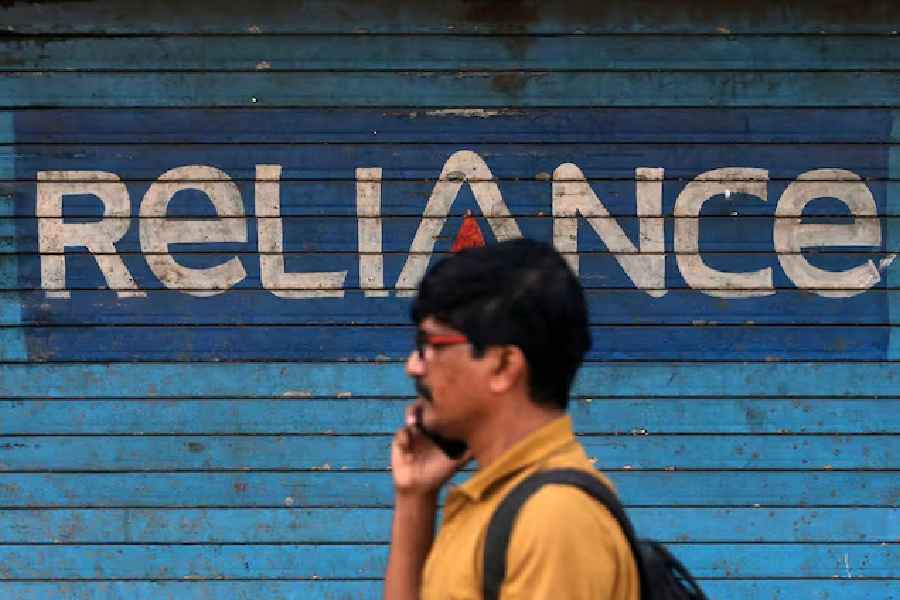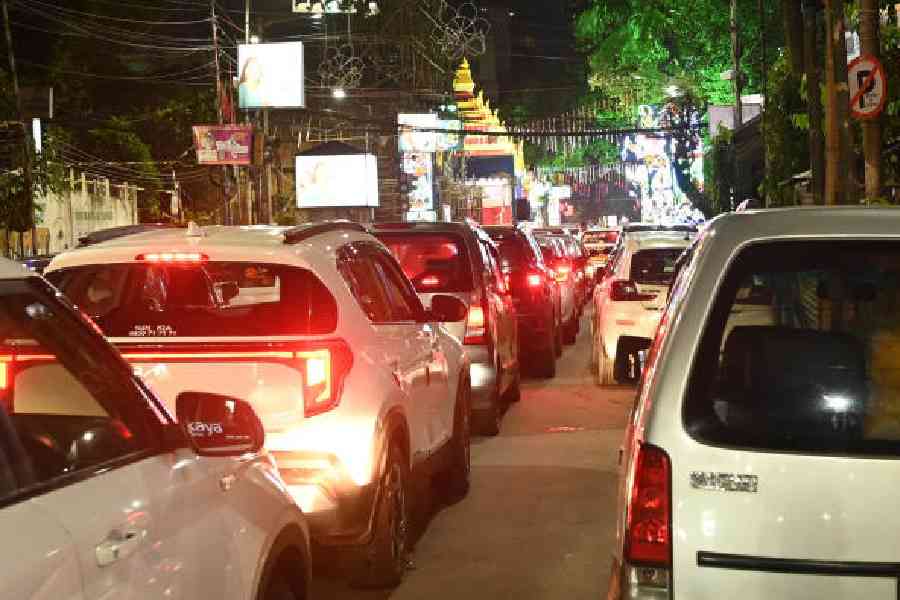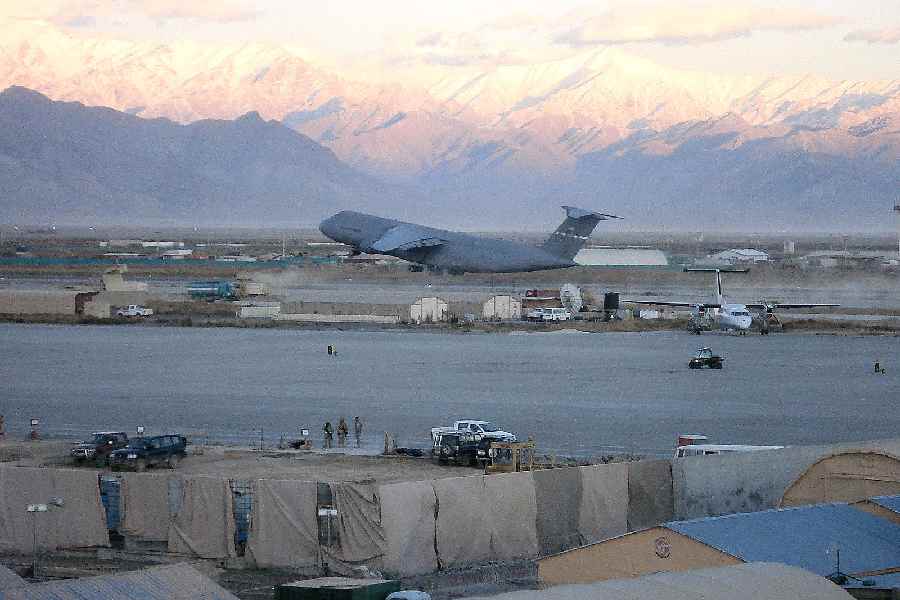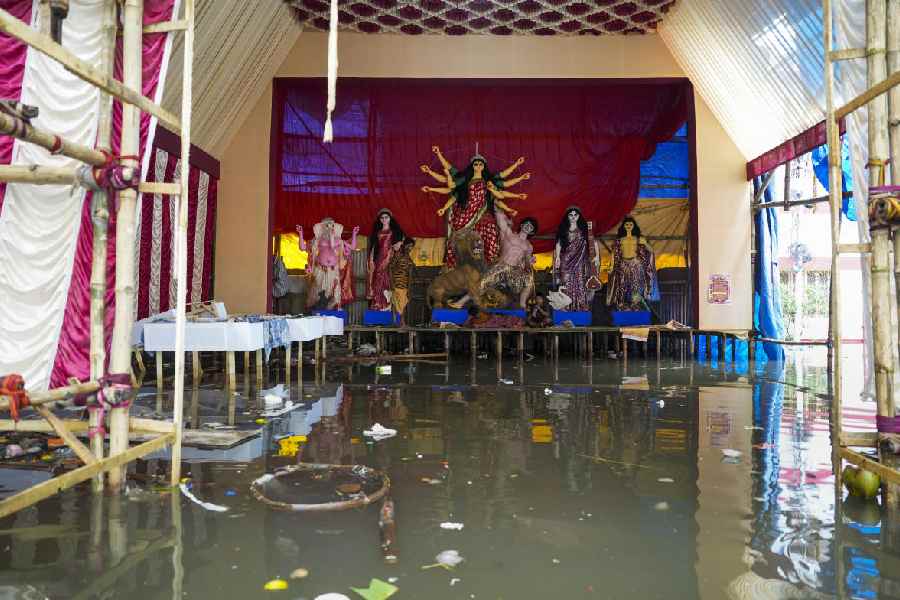 |
| Deluged: Aila-hit Canning, gateway to the Sunderbans; (below) a street in Calcutta |
Heavy rains. Whirling flood waters. Sinking land. Stories from Uttarakhand? No, Calcutta in the not-so-distant future.
A new World Bank study says Calcutta is sitting on a powder keg. The city’s proximity to the turbulent Bay of Bengal and unbridled urbanisation, coupled with unrelenting global warming, are pushing this city of over 15 million people towards an environmental disaster, says the study released last week.
The floods in the city, ranked among the top 10 in the world in terms of exposure to flooding, will be more destructive in nature, even at modest levels of climatic changes, it indicates.
The problems are many. There has been a higher-than-usual sea level rise in the Bay of Bengal in the vicinity of the city. Already, land is sinking in many parts of Calcutta, which is just a few metres (the range is 1.5m to 9m) above the mean sea level. The sinking (or land subsidence) is of 13.5 millimetre a year owing to the over exploitation of groundwater.
Heavy rains will make matters worse. Climate science projections indicate that the annual monsoon rainfall, influenced by a surge in global temperatures, will be 30 per cent more in many parts of India, including Calcutta. Besides, the rains will not be uniformly spread out, as it has been in the past, but torrential in nature. Many parts of the city will be underwater for hours, if not for days.
The World Bank report Turn Down the Heat prepares a case for reducing global carbon dioxide emission by narrating the uncertain future that people in South Asia, Southeast Asia and Sub-Saharan Africa face on account of climate change.
Calcutta along with Mumbai finds a prominent mention in the report. It is feared that both the coastal cities will experience large-scale devastation even when the atmospheric temperature increases only by a modest 2° Celsius. The damage that the extreme scenario of a 4°C increase by the turn of this century can cause will be severe, to say the least.
 |
“We do not know why, but the sea-level rise near Calcutta is 8mm a year, nearly three times the global mean of 3mm,” says Anders Levermann, professor at the Potsdam Institute for Climate Impact Research in Germany. “This is unusually high and is seen in only very few places in the world such as around the east coast of North America,” he says.
People tend not to take rising sea levels seriously. But Levermann, who studies the dynamics of the global climate system and is the lead author of a chapter on sea level change for the next assessment report of the Intergovernmental Panel on Climate Change (IPCC), stresses they should. “If the sea level had not risen by 20cm as it happened in the last century, the impact of cyclone Nargis (which killed nearly 80,000 people in Myanmar in 2008) would not have been as severe,” he says.
If the sea level continues to climb for a decade or two, it may prove disastrous for Calcutta, which is precariously perched on a huge groundwater column beneath layers of clay and sand and highly compressible wood stumps and peat beds. A study in the journal Current Science in June 2011 reported that different parts of the city witness land sinking in a range of 1.1mm to 43.8mm a year.
The problem, the experts point out, is that the thick clay on the surface shows no visible signs of this change. But cracks that developed in many buildings in the Salt Lake area are telltale signs of this phenomenon, hydrogeologists from a city-based institute argue in this paper.
Land around Calcutta University, the Raja Bazar Science College and Machhua Bazar sank at an estimated rate of 5-6.5mm a year between 1992 and 1998, shows a study by the Indian Institute of Remote Sensing, Dehradun, and the West Bengal State Water Investigation Directorate, Calcutta, published in 2007.
“The occurrence of sea level rise and substantial land subsidence simultaneously can be a double whammy for the city,” warns Dhrubajyoti Sen, who heads the department of water resources at the Indian Institute of Technology, Kharagpur.
Torrential rains are always a cause of worry for Calcutta, which has a partly crumbling drainage system more than 100 years old. “In many parts of the city, the capacity of the drainage network has come down to 30-35 per cent,” Sen says.
According to Kalyan Kumar Bhar, head of civil engineering at the Bengal Engineering and Science University, the city’s sewer system is designed for a maximum of 6mm an hour of constant rainfall. “Even if it is completely de-silted, it will still be insufficient to cope with a usual storm during the rainy season,” Bhar says.
With poor drains, a heavy deluge can only lead to unusual floods in the city. The monsoon system is anyway changing in such a way that the floods are a real risk, says the report by Levermann and his colleagues. Their study, which recently appeared online in the journal Geophysical Research Letters, highlights the “variability” of the monsoon rainfall. “One day’s spell of rains will be followed by a few days of drought,” says Levermann. “Focusing on average is not always useful. If rainfall comes in a spell followed by a drought, this can be devastating even if the average is normal.”
“This can lead to more frequent weather events,” agrees Madhavan Rajeevan of the ministry of earth sciences and chief scientist with the recently launched Monsoon Mission. “This would mean that we have to invest more on handling extreme events like the one we had in Uttarakhand last week,” Rajeevan says.
For Calcutta, too, it can be a story of disaster. “While it is in the very nature of weather to vary, the question is how much and whether we can deal with it,” says Levermann. Right now, the short answer to the second question is, no.
Tipping points
![]() The sea level rise near Calcutta is 8mm a year versus 3mm elsewhere in the world
The sea level rise near Calcutta is 8mm a year versus 3mm elsewhere in the world
![]() Calcutta experiences land subsidence of 13.5mm a year owing to the exploitation of groundwater
Calcutta experiences land subsidence of 13.5mm a year owing to the exploitation of groundwater
![]() Calcutta is among the top 10 cities in the world in terms of vulnerability to floods
Calcutta is among the top 10 cities in the world in terms of vulnerability to floods
![]() Many parts of the city lack a proper drainage system to flush out storm water
Many parts of the city lack a proper drainage system to flush out storm water
![]() The Indian monsoon will witness more extreme weather events — more dry spells, more torrential rains.
The Indian monsoon will witness more extreme weather events — more dry spells, more torrential rains.










